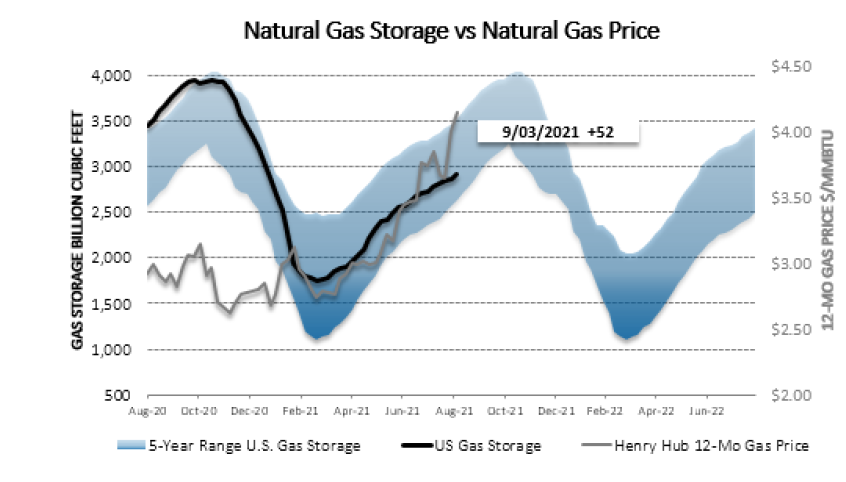POWER MARKETS

WEST This week’s heatwave has raised demand above 40 GW. Moreover, an explosion on the El Paso pipeline has significantly reduced transport natural gas capacity in Southern California, forcing extremely strong price signals from gas-fired power plants to ensure that enough fuel flows to their units. The resulting high natural gas prices have made power very expensive during the nightly ramp.
ERCOT Real-time prices for September at this point are above those of August, thanks to a few triple-digit prices during afternoon-peak intervals. Term prices are up from last week because of both rising heat rates and surging term natural gas prices. For example, the price for January-March 2022 at the North Hub is more than double last year’s price for the same term. Conditions are expected to turn milder, so prices may fall as mid-month approaches. In addition, the ORDC adder has been minimal so far this month.
EAST Day Ahead prices have softened by at least $10/MWh on average at the main trading hubs this week. A dip in demand due in part to a wipeout of some load by Hurricane Ida is partly responsible. DART spreads are minimal in the main hubs with the exception of NYISO’s Hudson Valley, where the Real Time average is $2/MWh more than the Day Ahead average, and NYC, where Real Time is $5/MWh higher than Day Ahead.